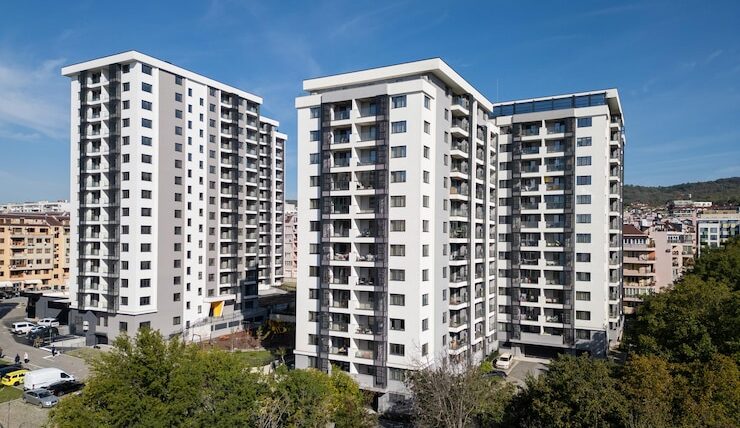ApexStone Capital | Strategic Multifamily Investments for Long-Term Growth
From 4-Plex to 20-Units: Why Bigger is Better for Investors

If you’re an investor, you’ve probably heard the classic debate: “Is it better to go small with a 4-plex, or scale up to a larger multifamily property?” On the surface, it seems like smaller projects—like a 4-plex—might be the safer choice. After all, fewer units mean less upfront capital, and fewer moving parts to manage, right?
Well, not always. In fact, bigger could actually be safer. Yes, I’m talking about multifamily properties with 5+ units, and I’m here to explain why going bigger might be the smarter move for investors.
1. Economies of Scale: More Rent, Same Roof to Fix
Here’s a real-world example: Let’s say you have a property that needs a new roof. Whether it’s a 4-plex or a 20-unit building, that roof still needs replacing. The beauty of a larger property is that, just like buying toilet paper at Costco (who doesn’t love bulk deals?), you’ve got more tenants helping cover the cost. Instead of trying to make up the cost of a roof with just 4 rent checks, you’ve got 20 paying tenants contributing to that cost. It’s cost efficiency at its finest.
More tenants, same roof. Sounds like a win-win, right?
2. More Stable Cash Flow: Say Goodbye to Vacancy Headaches
Now, let’s talk about vacancies. Losing one tenant in a 4-plex means you lose 25% of your income until that unit is filled. But in a 20-unit property, losing one tenant is a blip on the radar. The beauty of multifamily investments is the built-in diversification—with multiple units, the impact of a vacancy is far less significant.
It’s like splitting a brunch tab with friends—some of them always pay their share, so even if one person flakes, it doesn’t ruin the meal.
3. Better Financing: Banks Might Actually Like You
One of the biggest advantages of investing in multifamily properties (5+ units) is that banks tend to see these properties as businesses, not just homes. When you’re dealing with multifamily properties, banks typically lend based on income rather than just your credit score (and we all know how those scores can have a few quirks at times).
Plus, many of these loans are non-recourse. That means if the investment doesn’t go as planned, the bank can’t come after your personal assets. So, in the event that things go sideways, you won’t lose your favorite hoodie or your personal savings.
4. Higher Appreciation: You’re in Control
One of the best things about owning multifamily properties is that you can actively increase the value. Unlike a 4-plex, which is often valued based on comparable sales (which can be influenced by someone’s questionable renovation decisions), a 5+ unit property is valued based on Net Operating Income (NOI). This means that if you want to increase the property’s value, you can do so by raising rents, cutting costs, or improving amenities.
This puts you in control of your property’s value—you’re not relying on external market fluctuations, but on your own strategic decisions to improve performance.
5. More Cash Flow = More Partners = Bigger Wins
The bigger the deal, the more cash flow you’re likely to generate. This opens up the opportunity to partner with other investors who can bring complementary skills to the table—whether it’s in operations, asset management, or capital raising.
Imagine this: a larger property not only gives you more revenue, but it also creates opportunities to bring in experienced partners who can help elevate the deal. It’s like adding guacamole to your burrito—it’s a little extra, but totally worth it for the bigger picture.
Bigger Could Be Safer in Real Estate
While a 4-plex isn’t a bad investment, going for 5+ units could offer more stability, better returns, and less risk. With economies of scale, recession-resistant cash flow, and the ability to increase property value, bigger properties present an opportunity to scale your investments and unlock greater wealth-building potential.
If you’re ready to scale up and add a multifamily property to your portfolio, let’s talk. Bigger could be the way to go for a more stable and profitable future in real estate.
Share this post:
- Client : Enetrac int.
- Date : January 14, 2022.
- Link : info@archo.com
- Trade : Architecture.
Project Description
- Annual award for architecture work.
- Professional design approved by stakeholders.
- Fast software and modeling for reality interior design.
- True activated software and modeling for reality.
- Drawing software and modeling for reality engineering.
- True activated software and modeling for reality.
- Client : Enetrac int.
- Date : January 14, 2022.
- Link : info@archo.com
- Trade : Architecture.






